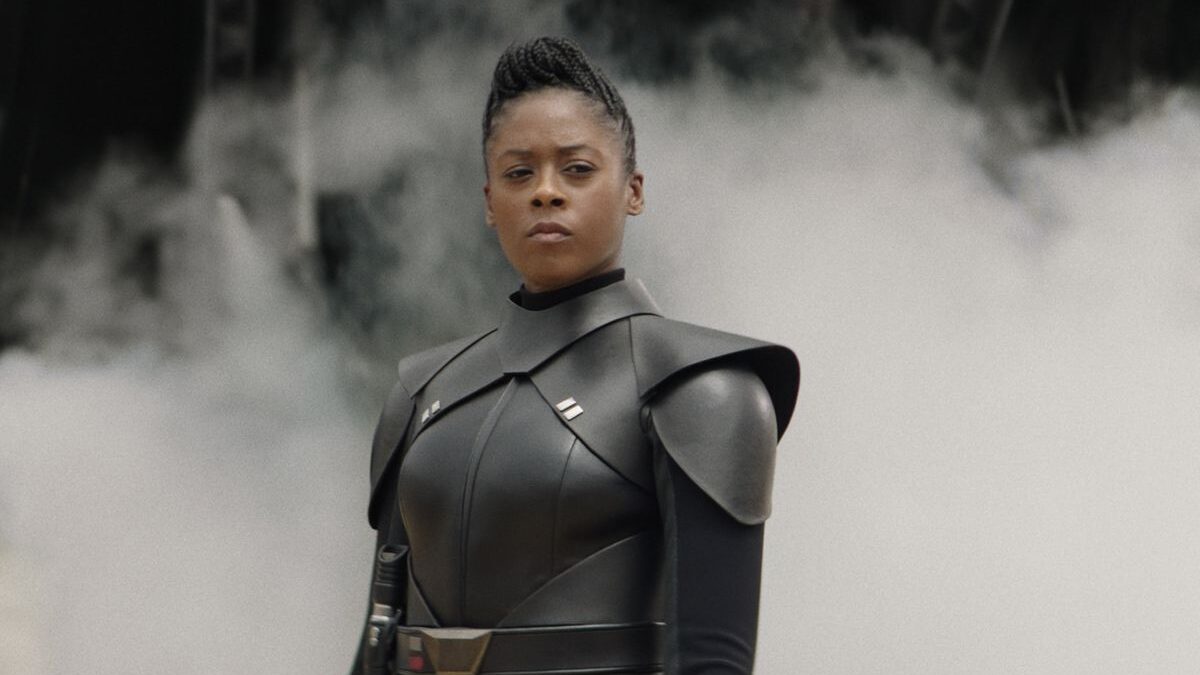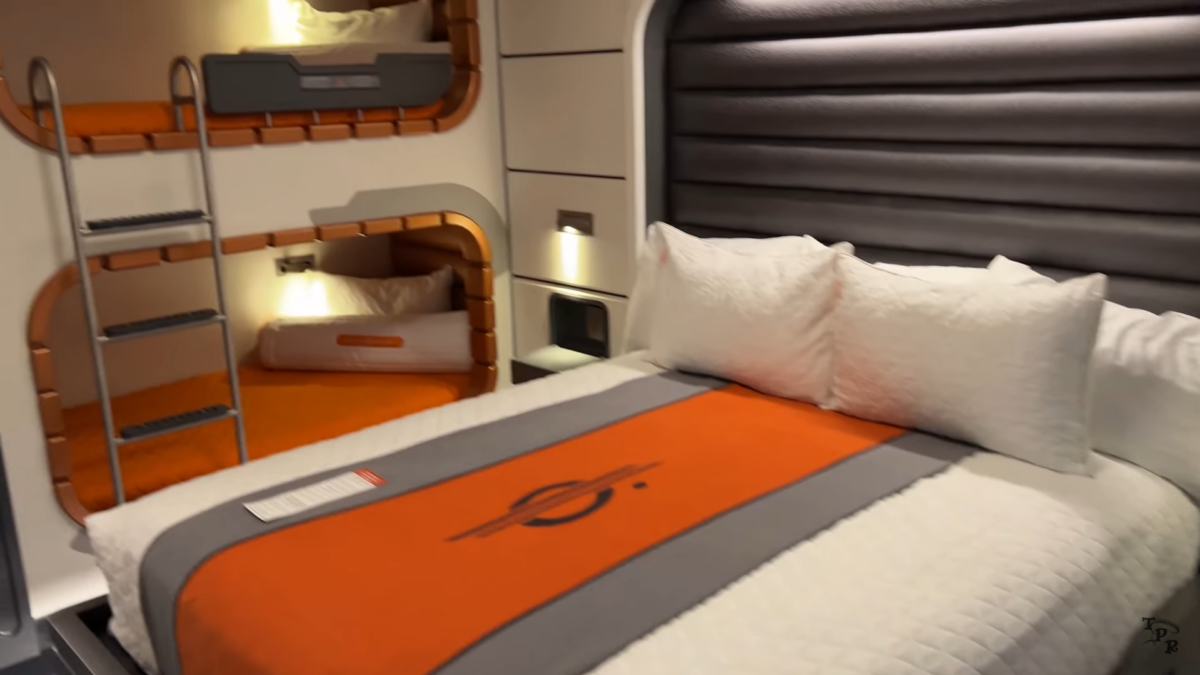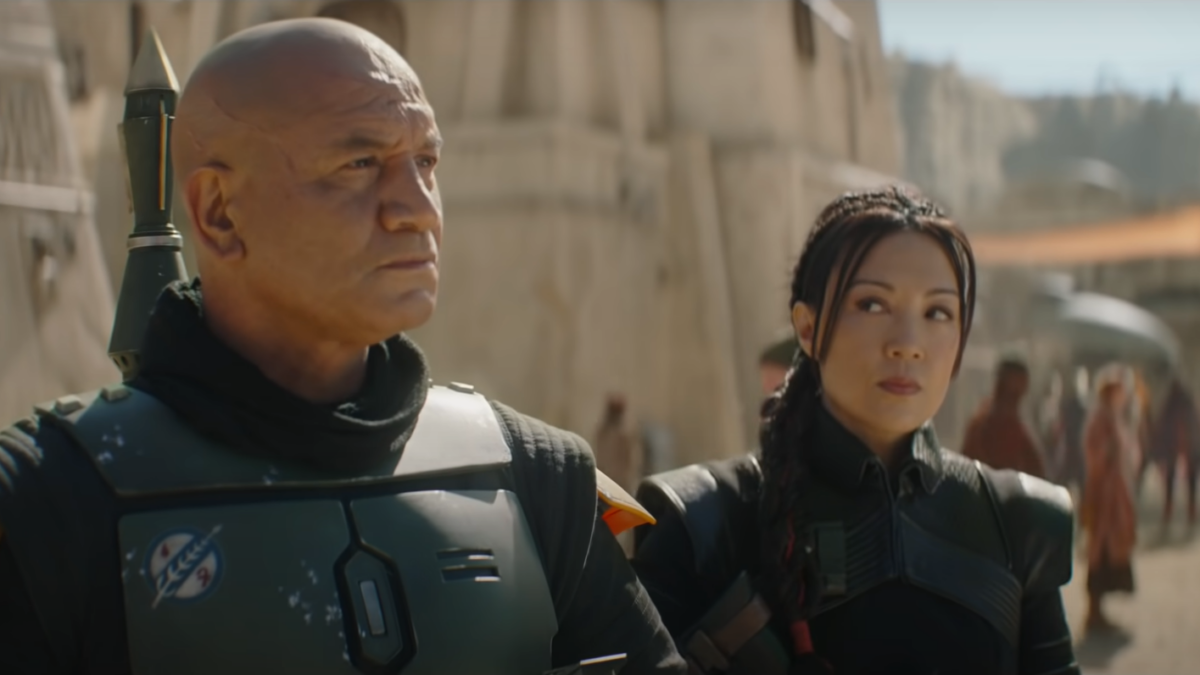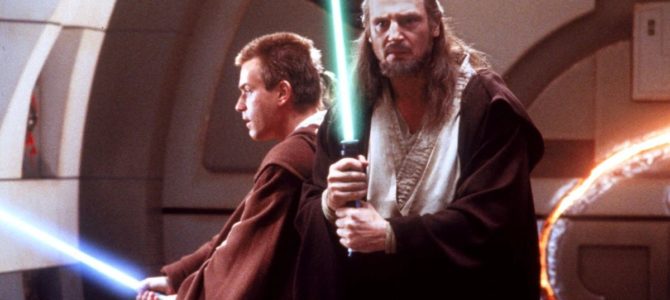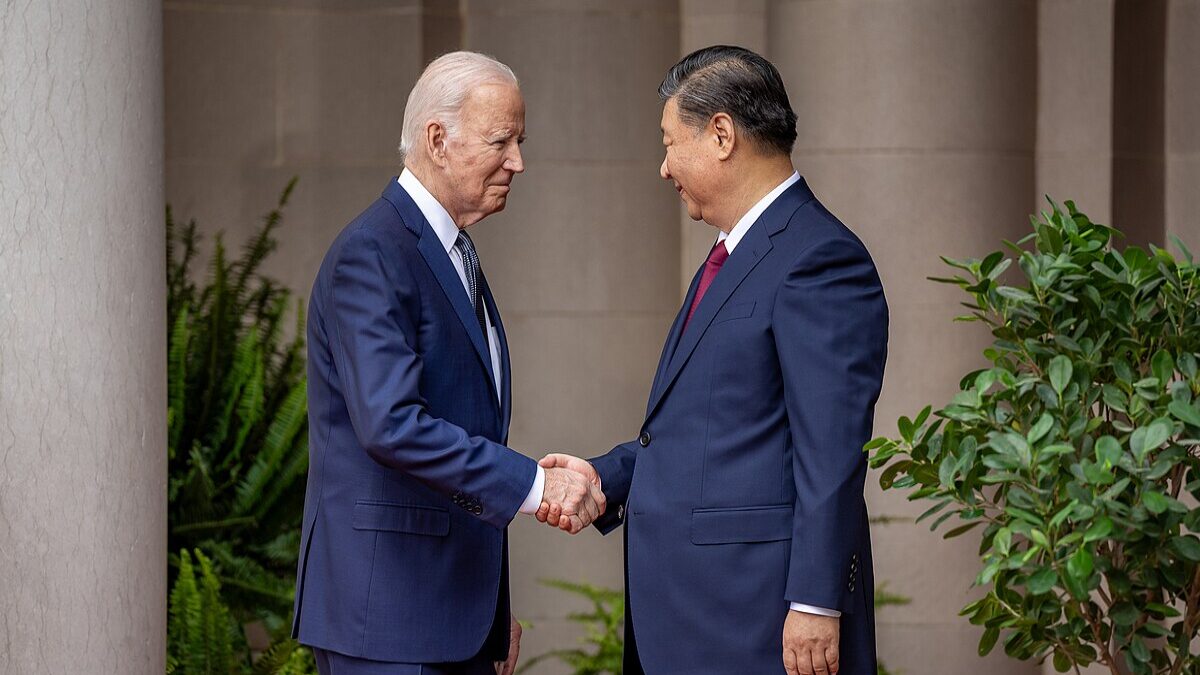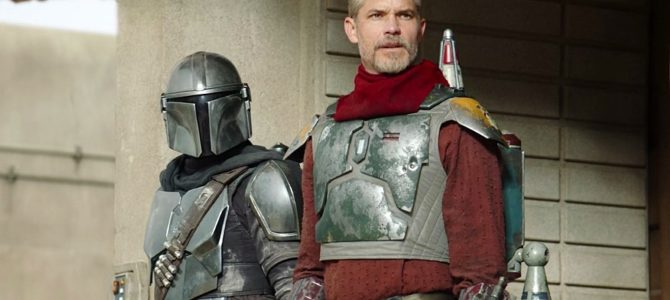
“The Mandalorian” is full of wonderful easter eggs for “Star Wars” fans of all levels. A series based on playing with the “discarded” action figures, it’s full of background characters, odd references, and even nods to other franchises. So far, the first two episodes of the second season are rich with great “easter eggs.” Here they are.
Chapter 9 — ‘The Marshall’

Cylon Graffiti — “Battlestar Galactica” is a series that owes its very existence to “Star Wars,” so I love when the series make sly references to each other. In the opening moments of this episode of “The Mandalorian,” Mando and Baby Yoda are strolling the dark streets on their way to a meeting and the buildings in those streets are covered with graffiti.
Most of it is obvious Anti-Imperial stuff with stormtroopers, but if you look closely, there’s an old-school, “Toaster-style” Cylon mixed in the street paintings. So say we all!

The Abyssin — At the very beginning of this episode, Mando and Baby Yoda are on an unknown planet searching for information on more hidden Mandalorians. They get that information from Gor Koresh, an Abyssin, a green-skinned, one-eyed alien that first appeared in the Mos Eisley cantina scene of 1977’s original “Star Wars” movie.

Gamorreans — In the small arena where Mando encounters the Abyssin, two Gamorreans are seen battling with vibro-axes as a sport. First appearing in “Return of the Jedi” as guards in Jabba the Hutt’s palace, the “pig-lizards” of “Star Wars” had a much richer history in the now-discarded “Star Wars” Legends. In non-canon stories, they were featured as wrestlers, pilots, even dark jedi. This is the first time since 1983 that we’ve seen them in live action, and the fact that they reference some of their activities from the old Expanded Universe is great fun.

Zuvio — Hiding in the crowd at the Gamorrean match was a Kyuzo that looked an awful lot like Constable Zuvio, introduced in 2015’s “The Force Awakens.” Zuvio was the law at Niima Outpost and was originally meant to play a larger role in J.J. Abrams’s first “Star Wars” sequel movie, but his scenes mostly ended up on the cutting room floor. He did, however, get an action figure.

Pit Droids — One of many droids introduced in the “Star Wars” prequels, Pit Droids worked on the pod racers in Mos Espa. One of them was famously sucked into the engine of a pod racer during a pit stop in “The Phantom Menace.”

R5-D4 — The red-accented R5 unit who first appeared in the original “Star Wars” movie as another droid peddled by the Jawas, R5 never got off of Tatooine. He also appeared in the first season of the Mandalorian in the cantina. Here we see him in Peli Motto’s hangar.

Cobb Vanth — Cobb Vanth is a character from the “Aftermath” novels by Chuck Wendig, first published in 2015. Vanth acquired the Mandalorian armor of Boba Fett off some Jawas who found it expelled from the Sarlacc Pit that ingested the legendary bounty hunter outside Jabba’s Palace at the beginning of 1983’s “Return of the Jedi.” Vanth is played here by Timothy Olyphant, known for his roles in “Deadwood” and “Justified.”

Weequay Bartender — The bartender in Mos Pelgo’s watering hole is a Weequay, a species first seen as guards to Jabba the Hutt in “ROTJ,” but since used throughout “Star Wars” media. They’ve appeared in animated properties, including “Clone Wars” and “Rebels,” and in the first season of “The Mandalorian.” Here the bartender is played by W. Earl Brown, who was also part of the “Deadwood” cast with Olyphant.

Cobb Vanth’s ‘Iron Man’ Moment — As Cobb Vanth is retelling to Mando the story of how he acquired Boba Fett’s armor, he is shown shooting the missile on Boba Fett’s jetpack. This missile has a long and sordid history.
When the Boba Fett toy was first created in the early 1980s, designers at Kenner wanted to include a firing missile on the jetpack of the toy. However, safety concerns and the potential for litigation stopped the company from including it in the mass-market version of the figure. Certain test versions of the figure exist, however, and are worth a fortune when they can be found on the collectors’ market. When Cobb Vanth fires this missile, it’s a nod to a scene from the original Iron Man movie, also directed by Jon Favreau.
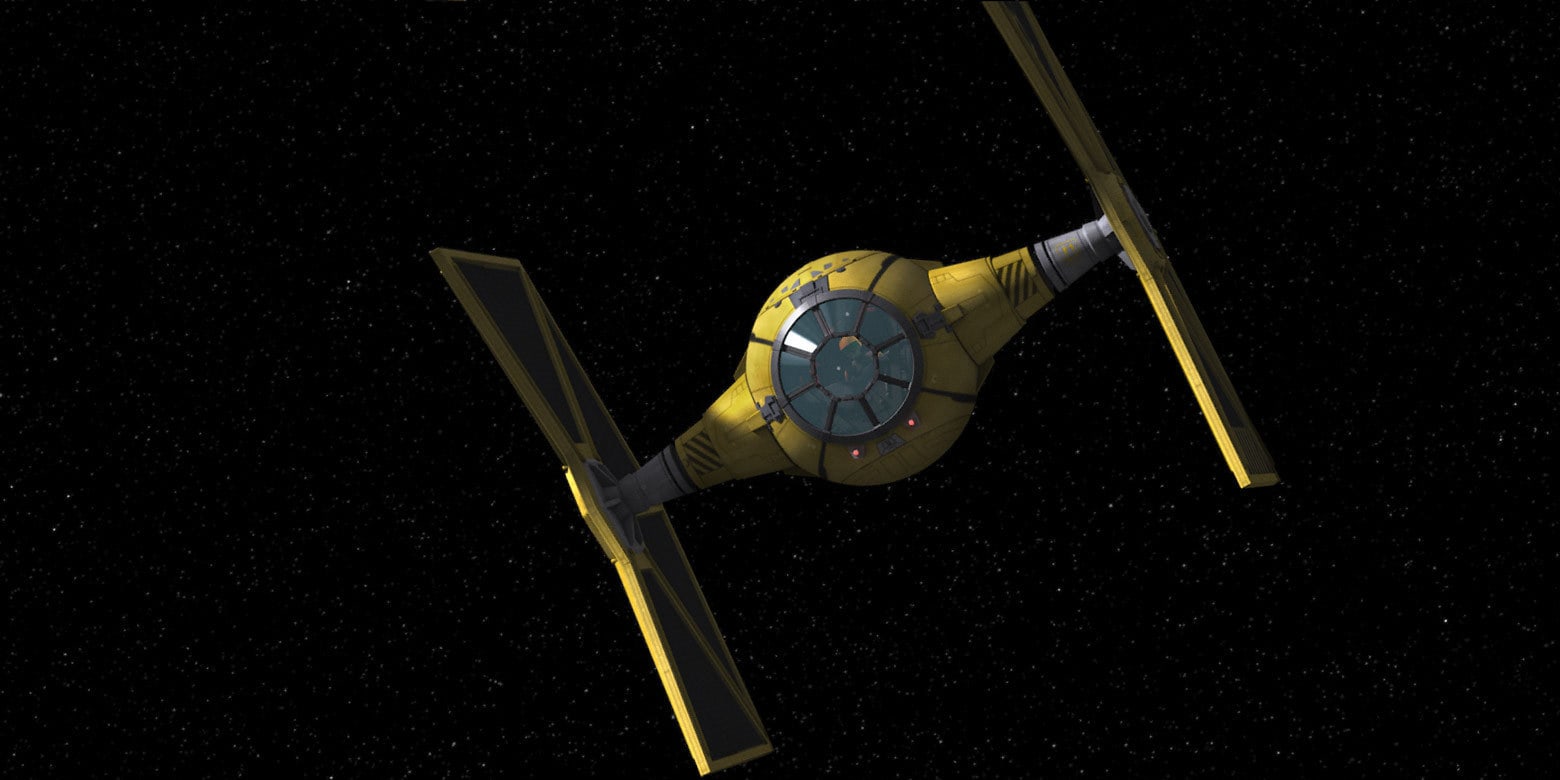
Mining Collective — The people Vanth blows up with that controversial missile are members of a local mining guild, one of the many organizations in “Star Wars” lore that have a thick backstory. In “Empire Strikes Back,” Lando and Han discuss Cloud City’s dealings with the Mining Guild, and they appear again in multiple episodes of “Rebels” even outfitted with sweet-looking yellow TIE Fighters.

Krayt Dragon — The beast that Mando, Vanth, the Sand People, and the town rally together to kill is a Krayt Dragon. A giant, sand-dwelling, worm-like beast, it was first seen in skeletal form in the background of the original “Star Wars” movie as C-3PO and R2-D2 wander the Tatooine desert.
Obi-Wan Kenobi also makes the shrieking yell of a Krayt Dragon to scare off the Sand People as he rescues Luke Skywalker at the beginning of that 1977 classic. Some of the beasts also contain a “pearl,” as seen toward the end of this episode when it is destroyed.
The dragons often ingest rocks to help them digest things in their gut, and in rare instances, those rocks may contain a Kyber Crystal, the same thing that powers a Jedi’s blade and the Death Star. That crystal is polished into a pearl in the beast’s stomach, and are very valuable in the “Star Wars” universe.

Tusken Raiders — Also known as “Sand People,” the Tusken Raiders first appeared in the original “Star Wars” in 1977. George Lucas based them upon the Bedouin people of the Arabian deserts, made famous in “Lawrence of Arabia.”
Here in “The Marshall,” they serve the purpose of the Indians of the Old West. One fascinating thing we learned in “The Mandalorian” is that Sand People speak via a form of sign language, a sign language created by one of the actors portraying a Tusken who happens to be deaf.
Troy Kotsur says, “I did research on the culture and environment of Tusken Raiders … My goal was to avoid ASL. I made sure it became Tusken Sign Language based on their culture and environment.”

Sarlacc Pit — When Vanth and Mando track down the Krayt Dragon to its home, the beast is living in the former home of a Sarlacc. These giant creatures, first introduced in “Return of the Jedi” are notorious for slowly digesting their meals “over a thousand years.”
In “ROTJ,” famed bounty hunter Boba Fett was eaten by Jabba the Hutt’s pet Sarlacc. Vanth has a great line in this episode: “I’ve lived on Tatooine my whole life, and there’s no such thing as the abandoned home of a Sarlacc.” Mando responds, “There is if you eat the Sarlacc.”

Anakin’s Pod Racer — In a fantastic Easter egg referencing the prequel trilogy, Cobb Vanth’s speeder is made from an engine of Anakin Skywalker’s pod racer from the Mos Espa race he wins in Episode I. This race earns him his freedom from Watto and allows him to join the Jedi.

Acid Spit — Other than being a giant beast that eats anything in its path, we also learn that the Krayt Dragon can spit acid, just like the terrorizing creatures in the “Alien” movies. At one point it dissolves several Tusken Raiders in one fell puke.

Hitting Boba Fett’s Rocket Pack — At one point during the battle with the Krayt Dragon, Mando hits the ignition on the back of Vanth’s rocket pack, sending him out of danger. It’s a reference to the very scene in “ROTJ” that leads to Vanth owning this famous set of armor.
At one point during the battle over the Pit of Carkoon, Han Solo (who is partially blind at the time from his long hibernation), knocks the back of Boba Fett’s rocket pack with a spear, sending the bounty hunter flying into the air and eventually into the mouth of the all-powerful Sarlacc.

70mm Westerns — Towards the end of this episode of “The Mandalorian,” Director Jon Favreau changes the aspect ratio of the screen to 70mm. This is a hat tip to the many 70mm “Spaghetti Westerns” of the mid-20th century that influenced everything about this series from the music to the look and feel of many of its episodes, especially this one. It’s a wonderful way to reference a classic genre from a director who is so under-appreciated in his own time.

Temuera Morrison — The closing shot of this episode shows actor Temuera Morrison watching our heroes depart. Morrison is famous for playing the role of Jango Fett in the “Star Wars” prequel movies. More important is that he was also used as the genetic basis for every Clone Trooper, and his son, Boba Fett. Morrison later was used as the voice for Boba Fett in the reissued original trilogy. Although it’s not clear who exactly he’s playing in this appearance, it could be Boba Fett or Clone Trooper Rex.
Chapter 10 — ‘The Passenger’

Scrapjaw Motito — Among the creatures looking to collect the bounty on Baby Yoda is a creature from 2015’s “The Force Awakens,” with a name that sounds more like a cocktail than anything else. Scrapjaw Motito first made an appearance as one of the scrappers who yells at Rey while she’s cleaning Star Destroyer pickings on Jakku. It’s not likely that this is the same creature, but probably just one from the same species. I’m willing to bet that this costume was readily available to the crew of “The Mandalorian” and that’s why he’s featured here.
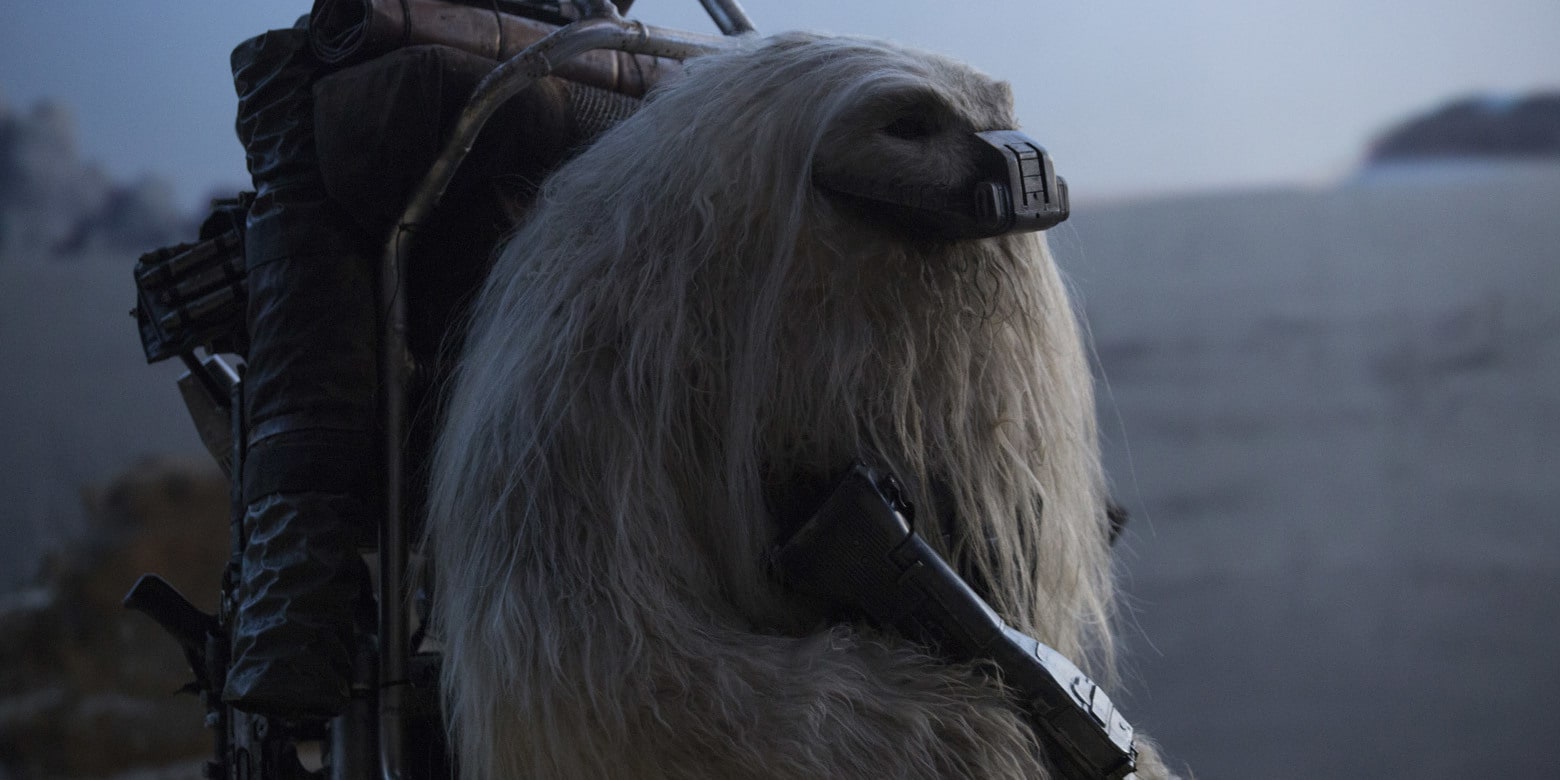
A Gigoran — In 2016’s incredibly undervalued “Rogue One,” a tall, white, hairy creature just like the one seen in the Mos Eisley Cantina in this episode is a part of Saw Gerrera’s Rebel cell on Jedha. His name was Moroff, and although he only had limited screen time, he did become an action figure, LEGO Mini-Fig (which I own), and part of the greater “Star Wars” universe.

‘Ant-Man’ — This episode of “The Mandalorian” was directed by Peyton Reed, who is known for the “Ant-Man” movies. Perhaps that’s why Dr. Mandible, essentially a giant ant like those seen in the MCU, was used in the Cantina.

Sabaac Game — The card game being played by Peli Motto and Dr. Mandible in the Cantina is Sabaac, the poker of the “Star Wars” universe. It’s the game that won Han Solo the Millennium Falcon from Lando. The hand that Peli wins with, the Idiot’s Array, is very rare in the game. It also served as the title for an episode of Rebels staring none other than Lando.

Treadwell — When Mando and company return to Peli’s hanger to talk about finding more Mandalorians, a WED Treadwell Repair Droid is seen cooking the dragon meat on a Pod Racer engine. That droid was first seen in the original “Star Wars” movie, which begs the question: why does Peli own all of the droids on Tatooine connected to Luke Skywalker?
There might be something there. Cooking meat with a Pod Racer engine is an Easter egg in itself, as it references “Ronto Roasters,” the in-universe restaurant at “Star Wars: Galaxies Edge” theme park at Disney World. Peli also notes not to overcook the meat, because she’s not a Rodian. The most famous Rodian in “Star Wars,” Greedo, happened to die at the very table where Peli was playing Sabaac.
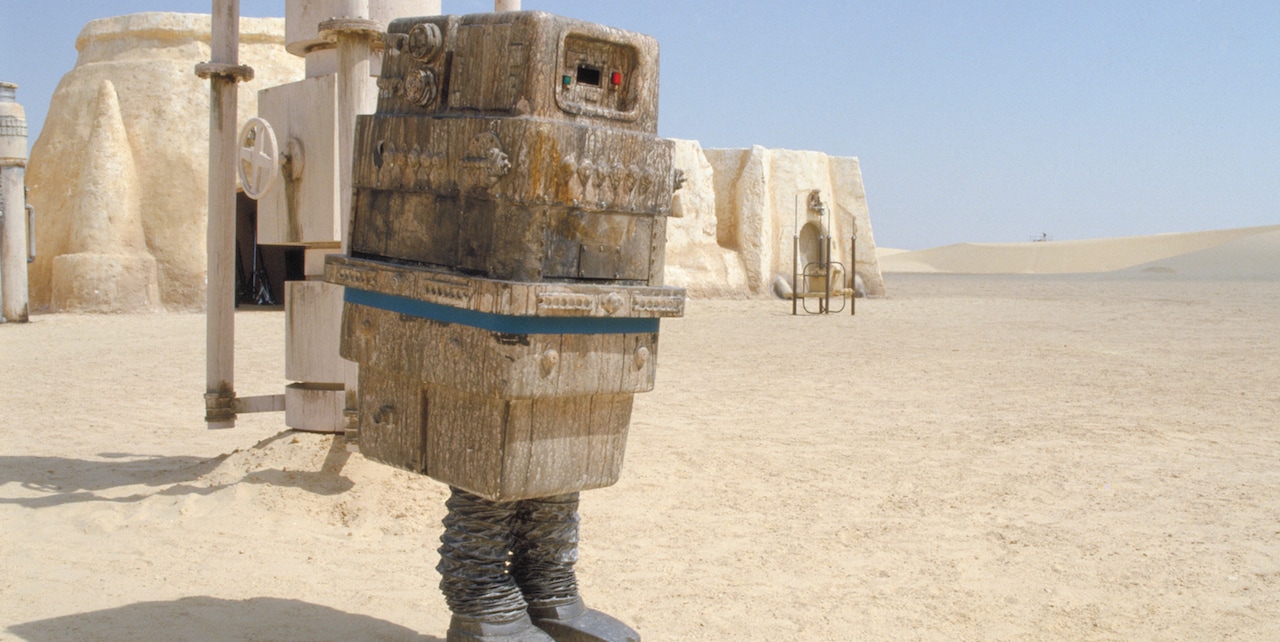
GNK Power Droid — Also seen in the background of Peli’s hanger is a GNK Power Droid, commonly called a “Gonk” droid for the sound they make. We first saw a Gonk Droid in the original “Star Wars,” but they appeared again in just about every animated and live-action “Star Wars” property since then, including season one of “The Mandalorian.”

Frog Lady — Although “Frog Lady” is a character whose species is unknown, her performance is brought to you by two “Star Wars” veterans. Frog Lady is voiced by Dee Bradley Baker, who did the voice of every Clone Trooper in “Clone Wars” and “Rebels.”
He’s an accomplished voice actor who is well respected and has a long history working with “The Mandalorian’s” executive producer, Dave Filoni. Frog Lady’s physical performance is done by Misty Rosas, who did the physical performance of Kuiil, the Ugnaught friend of Mando in season one.

Trapper Wolf — Making his second appearance in “The Mandalorian” as Rebel pilot Trapper Wolf is Filoni. What’s significant about his appearance in this episode is the emblem on his helmet. If you look closely, it’s the emblem of Jedi Master Plo Koon’s “Wolfpack” Clone Trooper Squad from “Star Wars: The Clone Wars” series. Filoni is an avid fan of wolves and has incorporated them into each of his “Star Wars” projects.
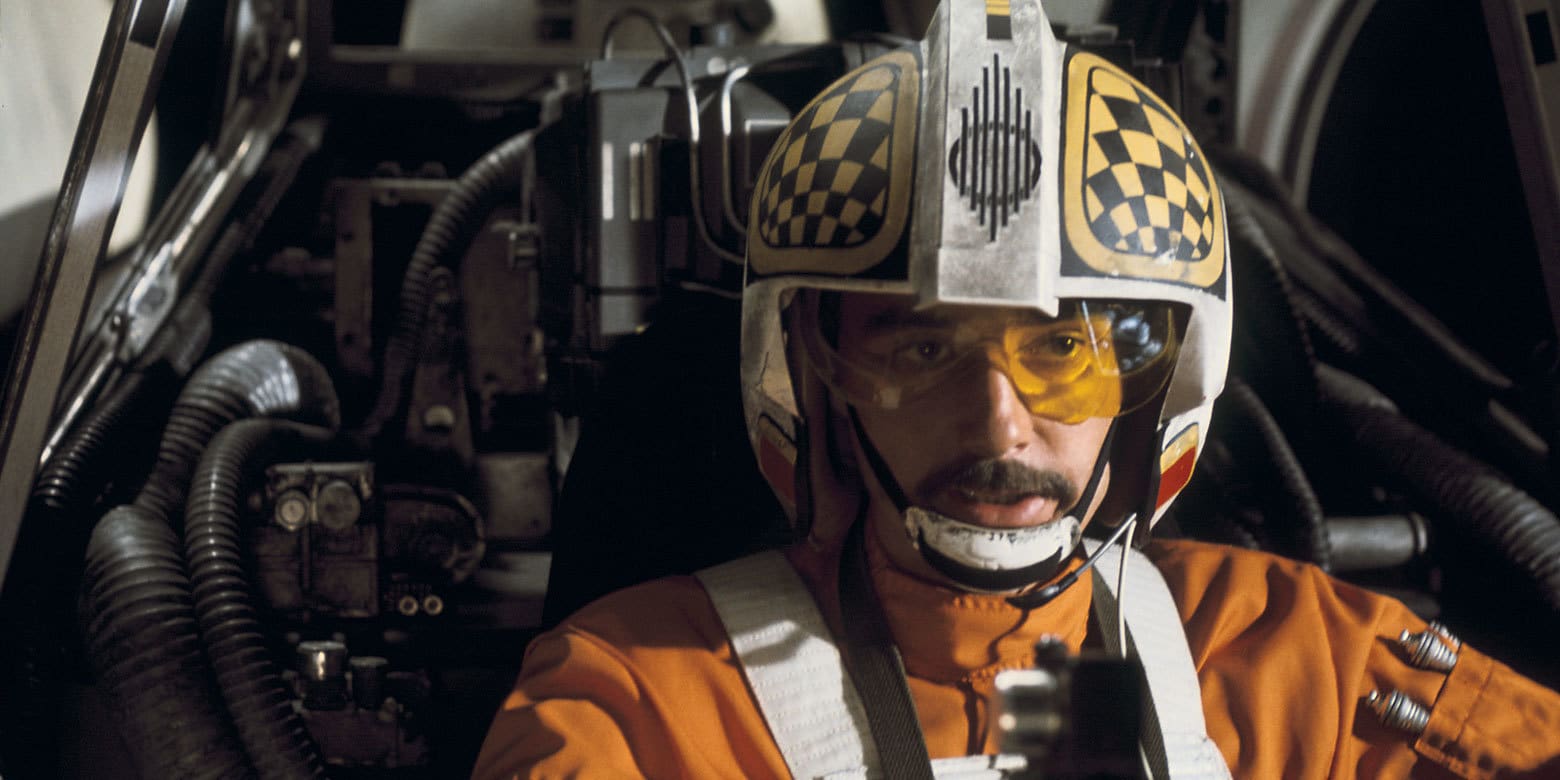
Carson Teva — The other pilot in this episode is Carson Teva, played by Canadian actor Paul Sun-Hyung Lee. Although this is his first appearance in a “Star Wars” property, Lee is a huge fan of the series. During his costume fitting for this episode, the crew wanted to get a picture of Lee in uniform, but his helmet was still being painted, so they grabbed another one, a very special one from “Star Wars” history that Lee immediately recognized. “I said, ‘Is that Bigg’s helmet?’ And they said, ‘Yeah, how do you know?’ Because I’m a nerd.”

Those ‘Alien’ Eggs — When Baby Yoda gets hungry, you better watch out. In this episode, when the Frog Lady escapes to what is found out to be the spider nest for a warm bath, Baby Yoda tracks down one of these eggs to open and eats the baby spider gestating inside. When the egg opens, the sound, slime, and opening action all mimic the eggs that contained “Face Hugger” aliens in the “Aliens” franchise.
To be honest, I half expected a Face Hugger to jump out of it as soon as I saw the egg open. As children of the ’70s and ’80s, both Favreau and Filoni are no doubt fans of Ridley Scott’s “Alien” franchise, and its influence can be felt at multiple points throughout “The Mandalorian.”


